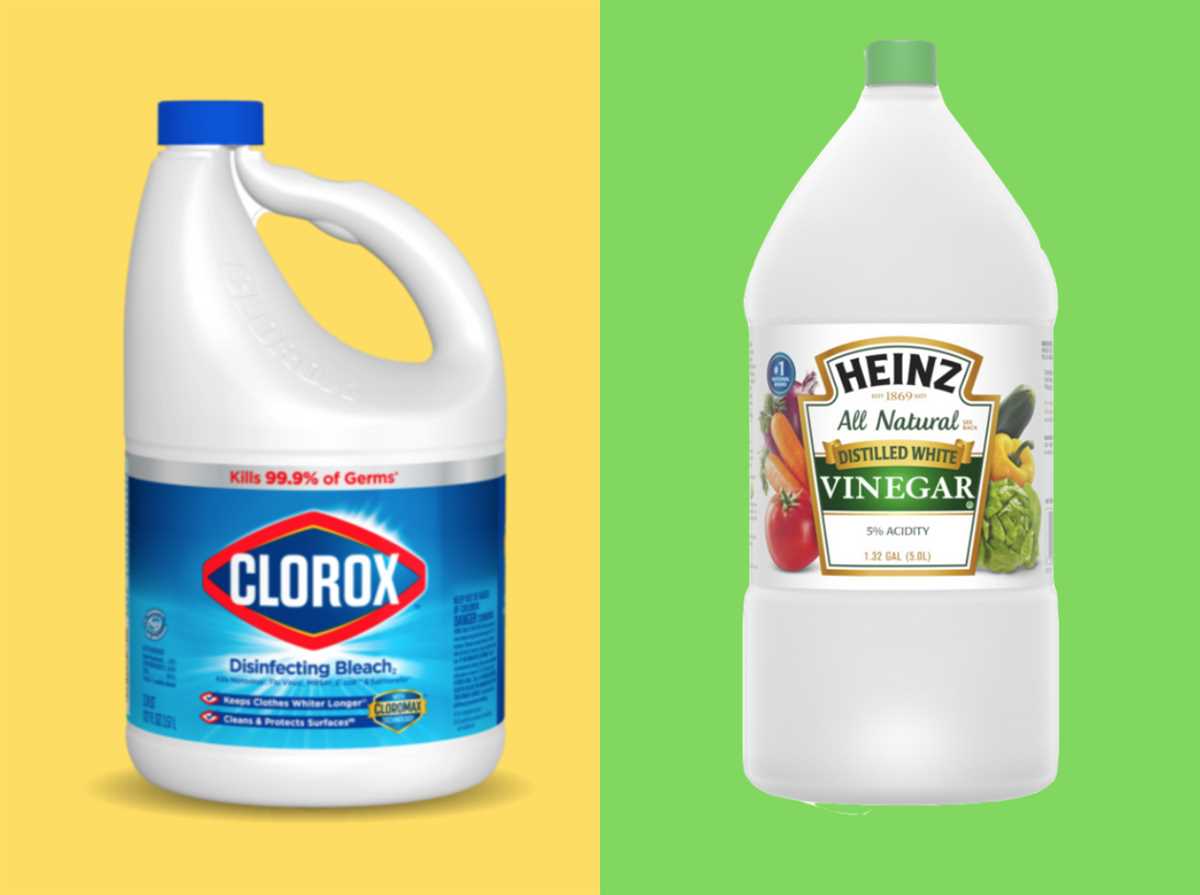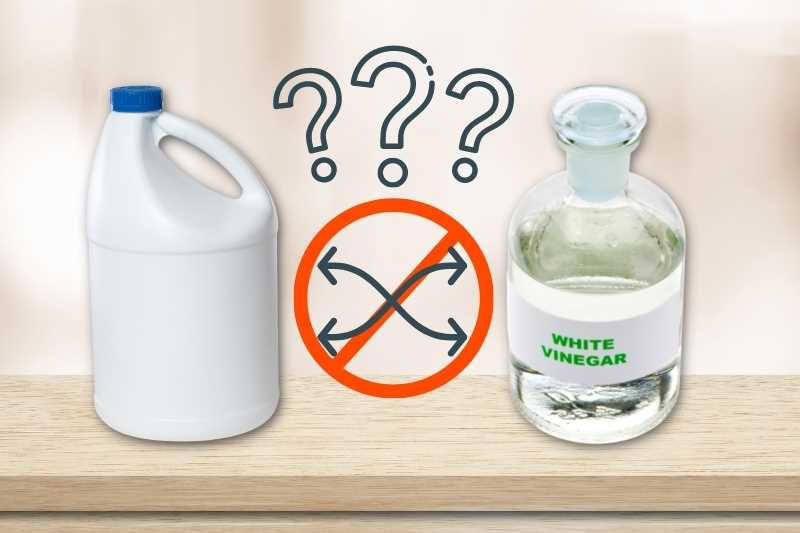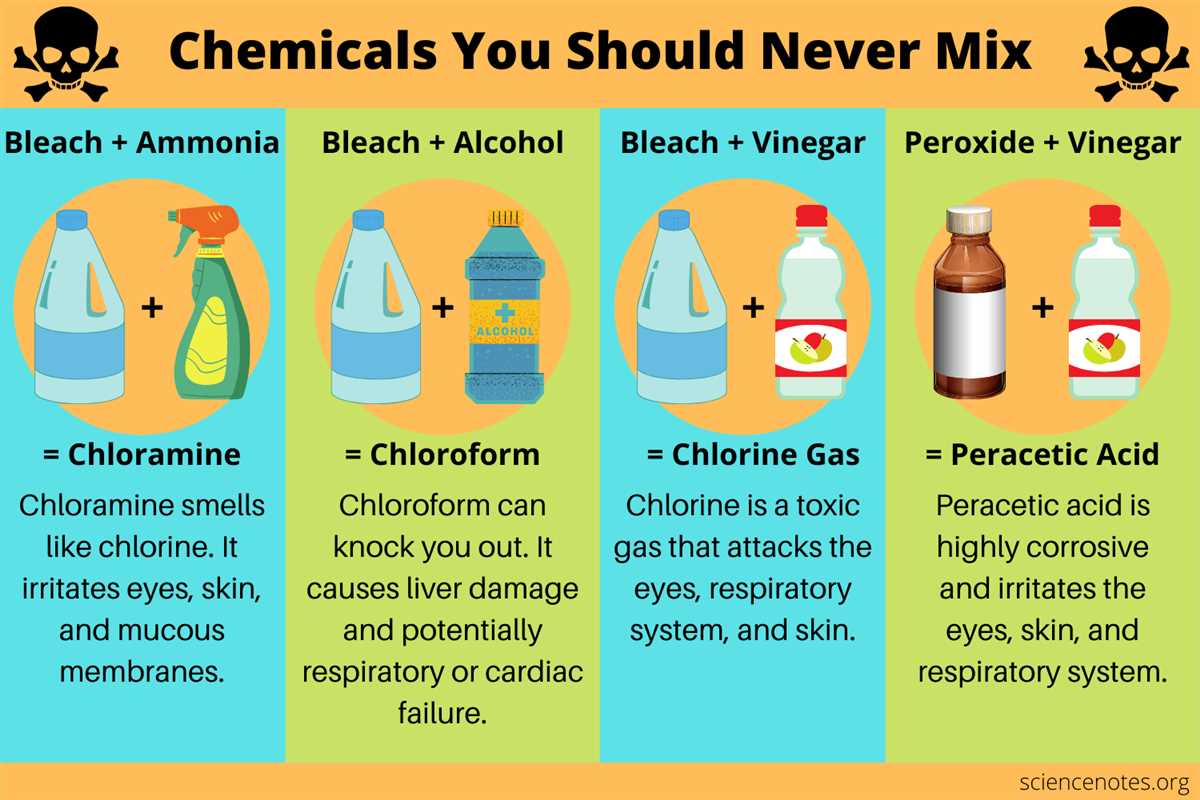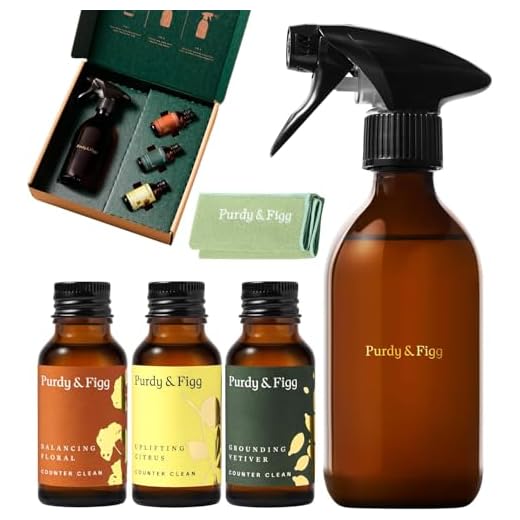




The use of cleaning products is an essential part of maintaining a clean and healthy living environment. However, it is important to understand that not all cleaning products are safe to be used together. One such dangerous combination is bleach and vinegar.
Both bleach and vinegar are commonly used household cleaning agents. Bleach, a powerful disinfectant, is often used to sanitize surfaces and remove tough stains. Vinegar, on the other hand, is a versatile cleaner that can be used to remove dirt, grime, and odors. While they may seem like a good combination, mixing bleach and vinegar can have serious consequences.
When bleach and vinegar are mixed together, they react to form chlorine gas. Chlorine gas is highly toxic and can cause a range of health problems, including respiratory difficulties, coughing, and chest pain. Inhaling chlorine gas can be particularly dangerous for individuals with existing respiratory conditions, such as asthma or chronic bronchitis.
In addition to the health risks, combining bleach and vinegar can also have damaging effects on the environment. The release of chlorine gas can contribute to air pollution and have a negative impact on the quality of air in your home. It is important to avoid any accidental mixing of these two cleaning agents and to use them separately as directed.
Overall, it is crucial to educate yourself about the potential dangers of mixing bleach and vinegar. Understanding the risks involved can help you make informed decisions and ensure the safety and well-being of yourself and your loved ones.
The Risks of Mixing Bleach and Vinegar
While bleach and vinegar are both common household cleaning agents, it is important to never mix them together. The combination of bleach and vinegar can create a dangerous chemical reaction that can release toxic fumes and cause serious health risks. It is crucial to understand the risks associated with this combination to avoid any potential harm.
Toxic Fumes

When bleach and vinegar are mixed, they create a chemical reaction that produces chlorine gas. Chlorine gas is highly toxic and can cause respiratory problems, headaches, nausea, and even death if inhaled in high concentrations. These toxic fumes can quickly spread in poorly ventilated areas and put the health of anyone nearby at risk.
Eye and Skin Irritation
The combination of bleach and vinegar can also create a mixture called chloramine, which can cause irritation to the eyes and skin. If exposed to chloramine, you may experience redness, itching, burning sensations, and even chemical burns. It is important to avoid direct contact with this mixture and ensure proper skin protection when handling cleaning agents.
Production of Harmful Chemicals
When bleach and vinegar are mixed together, they can produce a variety of harmful chemicals, including hypochlorous acid, chlorine gas, and chloramine. These chemicals can be corrosive and can damage surfaces, fabrics, and materials. In addition, they can pose a threat to the environment if not properly disposed of.
Alternatives to Mixing Bleach and Vinegar

To ensure your safety and the well-being of those around you, it is best to avoid mixing bleach and vinegar altogether. Instead, consider using alternative cleaning solutions or follow proper dilution guidelines when using these cleaning agents separately. Additionally, always read and follow the instructions on the product labels to minimize any potential risks.
Conclusion

Mixing bleach and vinegar can lead to the production of toxic fumes, eye and skin irritation, and dangerous chemicals. It is vital to understand the risks associated with this combination and take precautions to avoid any harm. By following proper cleaning protocols and using alternative solutions, you can maintain a safe and healthy environment for yourself and others.
Chemical Reactions and Hazardous Substances
Introduction

Chemical reactions occur when substances interact and transform into new compounds. While many chemical reactions are beneficial, some combinations can be highly dangerous and result in hazardous substances. One such combination to be avoided is the mixture of bleach and vinegar.
The Bleach and Vinegar Combination
Bleach is a commonly used household cleaner that is highly effective in removing stains and disinfecting surfaces. It contains strong oxidizing agents, such as sodium hypochlorite, which break down organic matter and kill bacteria.
Vinegar, on the other hand, is an acidic liquid that is often used for cleaning and cooking. It contains acetic acid, which gives it its sour taste and distinct smell.
The Chemical Reaction
The combination of bleach and vinegar results in a chemical reaction that produces toxic chlorine gas. This reaction occurs due to the strong oxidizing properties of bleach and the acidic nature of vinegar.
When bleach is mixed with an acid, such as vinegar, chlorine gas is released. Chlorine gas is a powerful respiratory irritant that can cause breathing difficulties, coughing, and chest pain. Prolonged exposure to chlorine gas can lead to more severe symptoms, including damage to the respiratory system and even death.
Health Hazards
Mixing bleach and vinegar can result in the release of hazardous substances that pose a serious risk to human health. In addition to chlorine gas, other toxic compounds, such as chloramine and chlorine dioxide, can also form during this reaction.
Exposure to these substances can have various health effects, including eye and skin irritation, respiratory problems, and damage to the central nervous system. Individuals with pre-existing respiratory conditions, such as asthma, are particularly vulnerable to the harmful effects of these toxic substances.
Preventing Accidental Mixing

To prevent accidental mixing of bleach and vinegar, it is important to read and follow the instructions on cleaning products carefully. It is also advisable to store cleaning products in their original containers and to keep them out of reach of children and pets.
If you accidentally mix bleach and vinegar, it is important to leave the area immediately and seek fresh air. If symptoms of respiratory distress occur, such as difficulty breathing or persistent coughing, it is essential to seek medical attention promptly.
Conclusion
The combination of bleach and vinegar should always be avoided due to the hazardous chemical reaction it produces. Mixing these substances can result in the release of toxic chlorine gas, which can cause serious health problems. It is important to use cleaning products safely and to be aware of the potential dangers of certain chemical combinations.
Health Effects of Mixing Bleach and Vinegar
Mixing bleach and vinegar can have serious health effects and should be avoided at all costs. When these two substances are combined, they create a toxic gas called chlorine gas.
1. Respiratory Problems

Inhaling chlorine gas can cause severe respiratory problems. It irritates the respiratory system, leading to coughing, wheezing, and shortness of breath. Prolonged exposure to chlorine gas can result in more serious conditions such as bronchitis or even pneumonia.
2. Eye and Skin Irritation
Contact with chlorine gas can cause irritation to the eyes and skin. If the toxic gas comes into contact with the eyes, it can cause redness, itching, burning sensation, and even temporary blindness. On the skin, it may cause redness, rash, and irritation.
3. Asthma Attacks
If someone with asthma is exposed to chlorine gas, it can trigger an asthma attack. The gas can irritate the airways and cause inflammation, leading to difficulty breathing, wheezing, and chest tightness. It is especially dangerous for individuals who already have a history of respiratory issues.
4. Chemical Burns
When bleach and vinegar are combined, they create a corrosive substance that can cause chemical burns. If this mixture comes into contact with the skin, it can result in pain, redness, and blistering. In severe cases, the burns may require medical attention.
5. Neurological Effects
Chlorine gas can also affect the nervous system. Exposure to the gas can cause dizziness, headaches, confusion, and even loss of consciousness. Prolonged exposure may lead to more serious neurological effects.
6. Other Symptoms
In addition to the above health effects, mixing bleach and vinegar can also cause nausea, vomiting, chest pain, and difficulty swallowing. These symptoms can vary depending on the level of exposure and individual sensitivity.
It is crucial to always remember that bleach and vinegar should never be mixed. The combination can have severe health effects and may even be life-threatening. If you accidentally mix bleach and vinegar or suspect any exposure to chlorine gas, seek immediate medical attention.
Safety Precautions when Using Bleach and Vinegar

1. Avoid mixing bleach and vinegar
It is extremely important to never mix bleach and vinegar together. When combined, these two substances create a toxic gas called chlorine gas, which is harmful to human health. Inhaling chlorine gas can cause respiratory problems, eye irritation, coughing, and even chemical burns.
2. Use bleach and vinegar separately

Instead of mixing bleach and vinegar, it is recommended to use these substances separately for different cleaning purposes. Bleach is effective for disinfecting and removing tough stains, while vinegar is great for removing odors and tackling mildew. By using them separately, you can avoid the dangerous chemical reaction between bleach and vinegar.
3. Ventilate the area
When using bleach or vinegar, it is important to ensure proper ventilation in the area. Open windows and turn on fans to keep the air flowing. This will help to prevent the buildup of harmful fumes and reduce the risk of respiratory issues.
4. Wear protective gear

Always wear protective gear such as gloves and goggles when handling bleach or vinegar. These substances can be corrosive and may cause skin irritation or damage to your eyes. By wearing the appropriate protective gear, you can minimize the risk of accidental exposure.
5. Keep bleach and vinegar out of reach of children and pets
Bleach and vinegar should be stored in a secure place, out of reach of children and pets. These substances are toxic and can cause harm if ingested or mishandled. It is important to keep them stored properly and away from curious hands or paws.
6. Follow the instructions on the labels

Before using bleach or vinegar, make sure to carefully read and follow the instructions on the product labels. Each product may have specific guidelines for safe and effective use. Following the instructions will help you avoid any unnecessary risks or accidents.
7. Dispose of bleach and vinegar properly
When you no longer need bleach or vinegar, dispose of them properly according to the manufacturer’s instructions or local regulations. Avoid pouring them down the drain or into the trash without taking the necessary precautions as they can harm the environment.
8. Consider alternative cleaning methods
If you are concerned about using bleach or vinegar, there are alternative cleaning methods available. Look for natural cleaning products or homemade solutions that are less toxic and safer for you, your family, and the environment.
By following these safety precautions, you can minimize the risks associated with using bleach and vinegar and ensure a safer cleaning experience.
Alternative Cleaning Solutions without Mixing Bleach and Vinegar
While bleach and vinegar are commonly used for cleaning, it is important to avoid mixing them together, as it can create toxic gas and be harmful to your health. However, there are several alternative cleaning solutions that you can use separately to achieve the same results.
Lemon Juice
Lemon juice is a natural cleaning agent that has mild disinfectant properties. It can be used to remove stains, freshen up surfaces, and eliminate odors. Mix lemon juice with water in a spray bottle and use it on countertops, cutting boards, and other hard surfaces.
Baking Soda
Baking soda is a versatile cleaning agent that can be used for various purposes. It acts as a mild abrasive, making it effective in removing stains and grime. You can create a paste by mixing baking soda with water and apply it to surfaces like sinks, bathtubs, and ovens. Let it sit for a few minutes before scrubbing and rinsing off.
Vinegar
While vinegar should not be mixed with bleach, it can still be used as a safe and effective cleaning solution on its own. It is particularly useful for removing hard water stains, grease, and soap scum. Dilute vinegar with water and use it on windows, mirrors, and other glass surfaces. You can also use it as a fabric softener in your laundry.
Hydrogen Peroxide
Hydrogen peroxide is a powerful disinfectant and stain remover. It can be used to sanitize surfaces, remove tough stains, and eliminate odors. You can apply it directly to surfaces or mix it with water for a milder solution. Just make sure to wear gloves and follow the instructions on the bottle.
Citrus Vinegar Cleaner
Avoid mixing vinegar with bleach, but you can infuse vinegar with citrus peels to create a citrus vinegar cleaner. Simply place citrus peels in a jar, cover them with vinegar, and let the mixture sit for a few weeks. Then strain the vinegar and use it as a natural cleaner for various surfaces.
Steam Cleaning
Steam cleaning is an effective and chemical-free way to clean and sanitize your home. Steam cleaners use hot water vapor to disinfect surfaces and remove dirt and grime. They can be used on a wide range of surfaces, including floors, carpets, and upholstery.
Natural All-Purpose Cleaners
If you prefer to buy cleaning products, look for natural all-purpose cleaners that do not contain bleach or vinegar. There are many eco-friendly options available on the market that are safe to use and still effective in cleaning and disinfecting your home.
Remember to always read and follow the instructions on the cleaning products you use, and avoid mixing bleach and vinegar together. By using these alternative cleaning solutions, you can maintain a clean and safe environment without the risk of toxic gas.
FAQ
What happens when you mix bleach and vinegar?
When you mix bleach and vinegar, a chemical reaction occurs that produces chlorine gas. This gas is toxic and can cause a variety of health problems if inhaled.
Can mixing bleach and vinegar kill you?
Mixing bleach and vinegar can produce chlorine gas, which is toxic and can be deadly if inhaled in large amounts. It is important to never mix bleach and vinegar together.
What are the dangers of mixing bleach and vinegar?
Mixing bleach and vinegar can result in the production of chlorine gas, which is highly toxic. Inhaling chlorine gas can cause respiratory problems, chest pain, coughing, and even lung damage. It is important to avoid this dangerous combination.
Is it true that bleach and vinegar create a toxic gas?
Yes, when bleach and vinegar are mixed together, they create a chemical reaction that produces chlorine gas. This gas is toxic and can be harmful to your health if inhaled.
Why is it dangerous to mix bleach and vinegar?
Mixing bleach and vinegar is dangerous because it produces chlorine gas, which is toxic and can cause respiratory issues, eye irritation, and even chemical burns. It is important to always keep bleach and vinegar separate.













